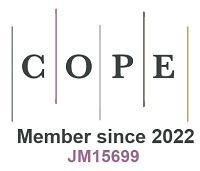Short Communication | Open Access
Photoredox/nickel dual-catalyzed reductive C(sp2)‒Si cross-coupling
Views: 44
Chem. Synth. 2025;5:[Accepted].
Author Information
Article Notes
Cite This Article
Abstract
Nickel-catalyzed cross-electrophile coupling of carbon-electrophiles and silicon-electrophiles has recently emerged as a powerful tool for C‒Si bond formations to synthesize highly valuable organosilanes. This reductive coupling strategy eliminates the manipulation of highly reactive organometallic reagents, thereby leading to a good functional group tolerance and a high step economy. However, the reported reductive C‒Si couplings have to use stoichiometric amounts of Zn or Mn dust as reductant, which somehow limits the synthetic application. Herein, we reported a novel cross-electrophile coupling of aryl halides with chlorosilanes enabled by a dual photoredox/nickel catalysis. Instead of using metallic reductants, a mild and readily available α-silylamine is selected as a reliable organic reductant. A variety of vinyl chlorosilanes and chlorohydrosilanes were coupled smoothly. This new catalytic protocol offers an alternative approach for facile access of organosilanes.
Keywords
Organosilanes, reductive coupling, organic reductants, photoredox catalysis, nickel catalysis, chlorosilanes
Cite This Article
Liu J, Yuan W. Photoredox/nickel dual-catalyzed reductive C(sp2)‒Si cross-coupling. Chem. Synth. 2025;5:[Accept]. http://dx.doi.org/10.20517/cs.2024.89
Copyright
© The Author(s) 2025. Open Access This article is licensed under a Creative Commons Attribution 4.0 International License (https://creativecommons.org/licenses/by/4.0/), which permits unrestricted use, sharing, adaptation, distribution and reproduction in any medium or format, for any purpose, even commercially, as long as you give appropriate credit to the original author(s) and the source, provide a link to the Creative Commons license, and indicate if changes were made.












